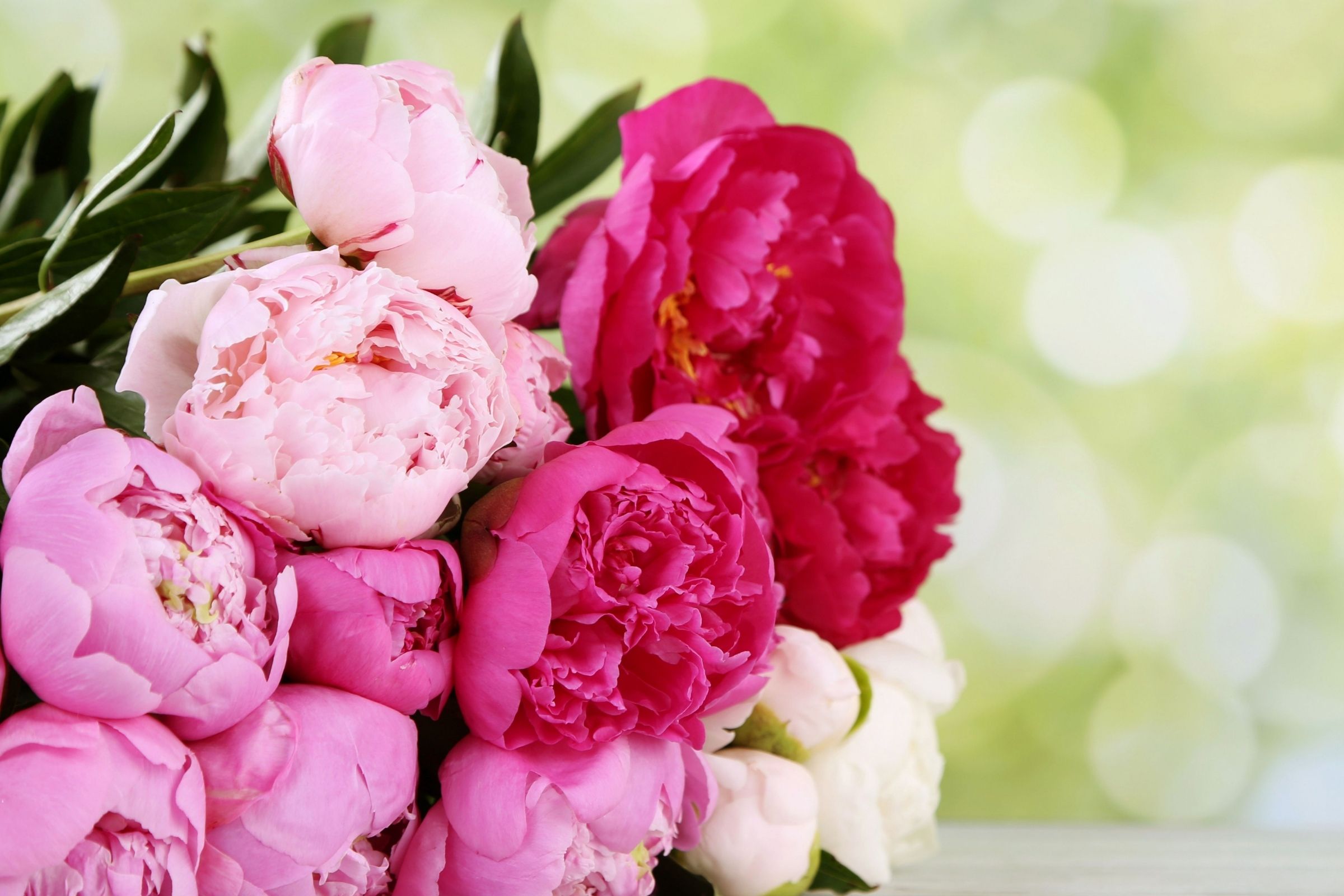
How to Plant, Grow and Care for Your Peony
Table of Contents
About Peonies – Paeonia
Paeonia or peonies are beloved perennials in the garden. As long-lived and low-maintenance garden plants, they deserve a place in every gardening space. Peonies live for over 100 years and will increase in the number of blooms it produces each season. Once peonies are established, they are drought tolerant and can handle a few weeks without water. As an added feature to their beautiful fragrant blooms, peonies are deer resistant, so you will enjoy them instead of the four-legged garden visitors.
Common Types of Peonies
Herbarceous (Garden Peony)
The most common types of peonies are herbaceous (common garden), intersectional (itoh) and suffruticosa (tree) peonies. Herbaceous peonies are the common garden peony type that grows to about 100 cm (40”). They sprout up new lush foliage each spring and produce large blooms in shades of white, pink, purple, red, coral, and yellow. The blooms vary from very fragrant to a slight scent. Once the blooms have faded, remove the seed pods and allow the leaves to continue to grow. In the fall they die back to the ground, and you can prune the old stems to the soil level. Garden peonies are very hardy perennials as most are hardy to zone 2. The unique Paeonia tenuifolia, or fern-leaf peonies, with their finely cut foliage, is also a herbaceous type.
Our Favourite Varieties of Herbaceous – Garden Peonies
- Celebrity
- Coral Charm
- Lemon Chiffon
- Music Man
- Sarah Bernhardt
- Shirley Temple
- tenuifolia Rubra flora Plena
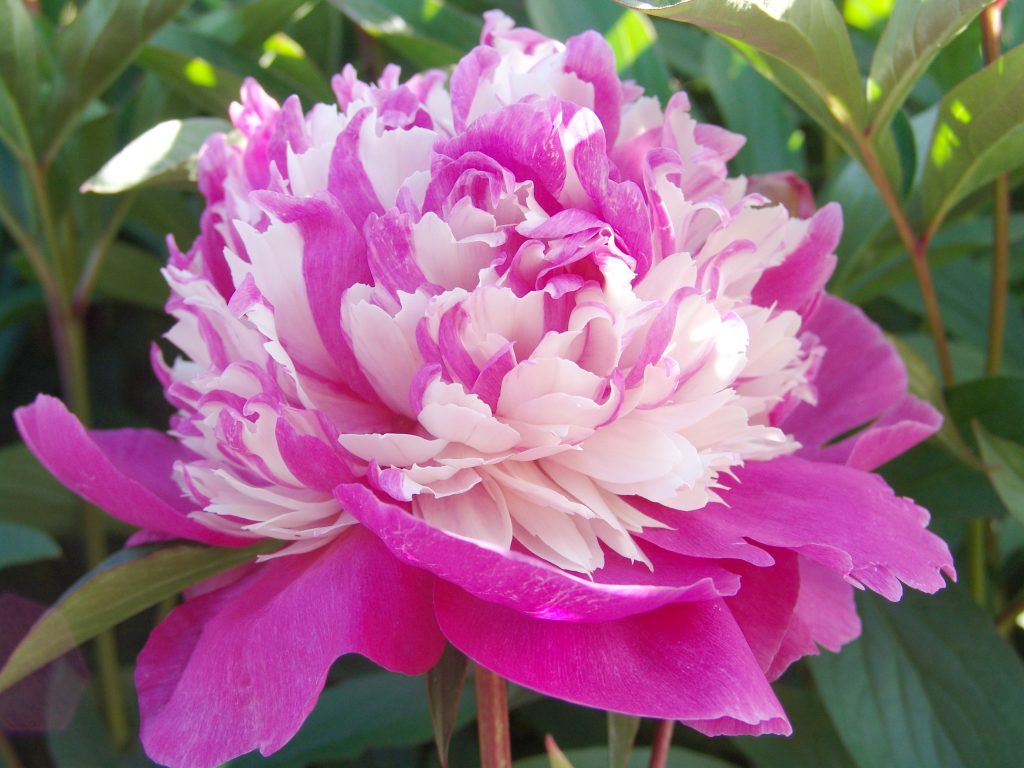
Celebrity 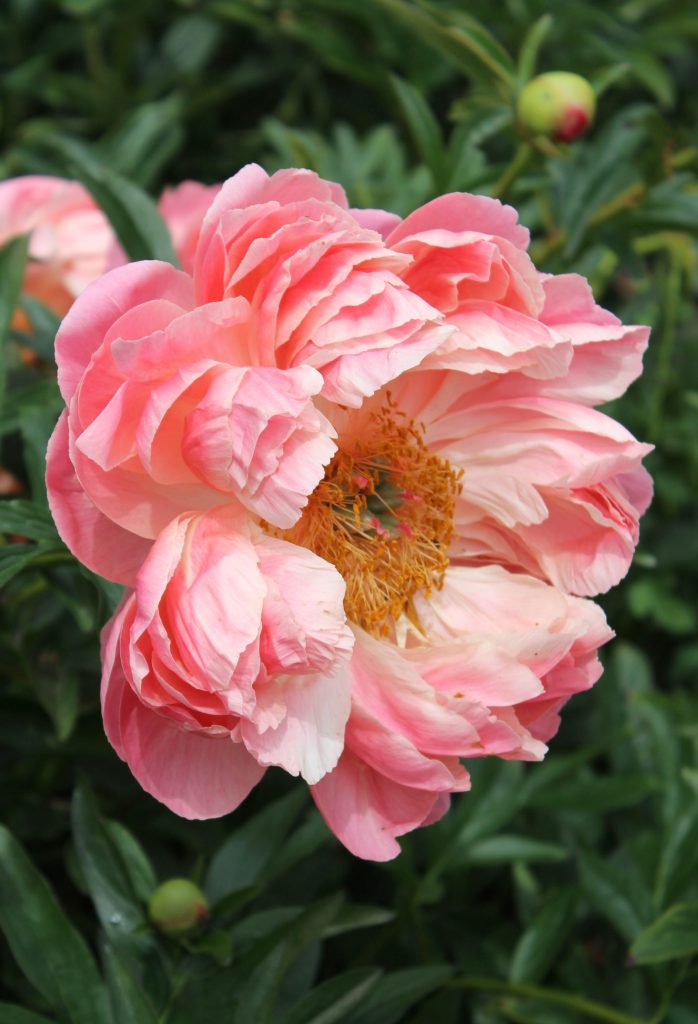
Coral Charm 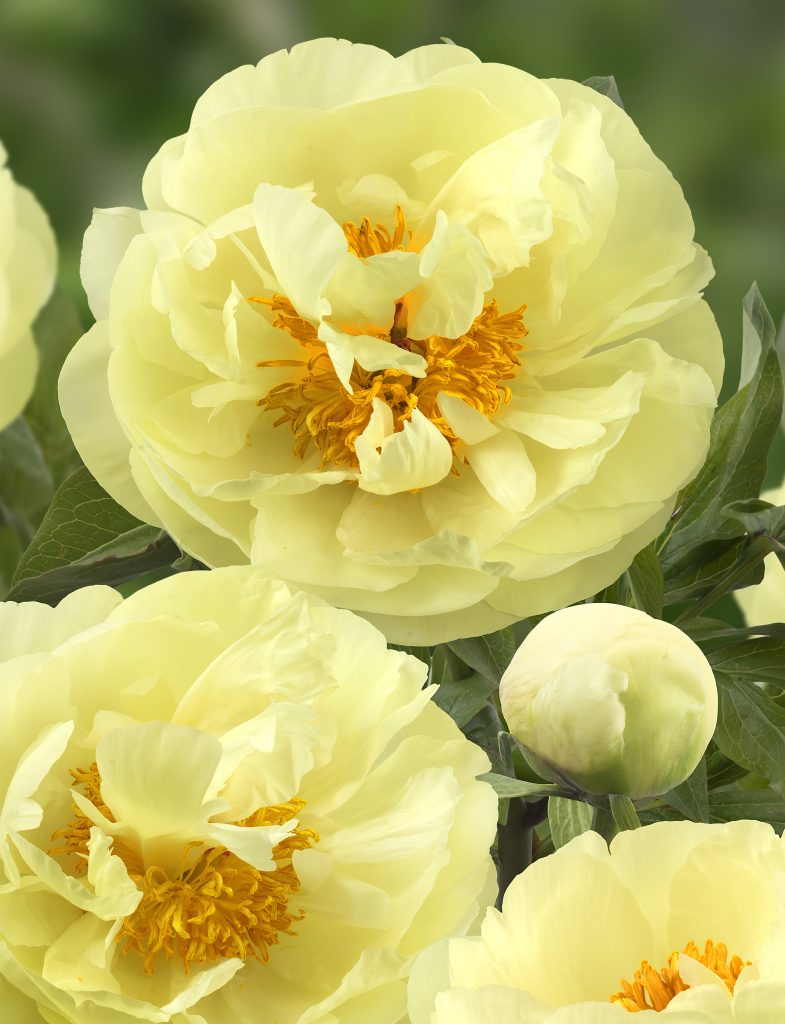
Lemon Chiffon 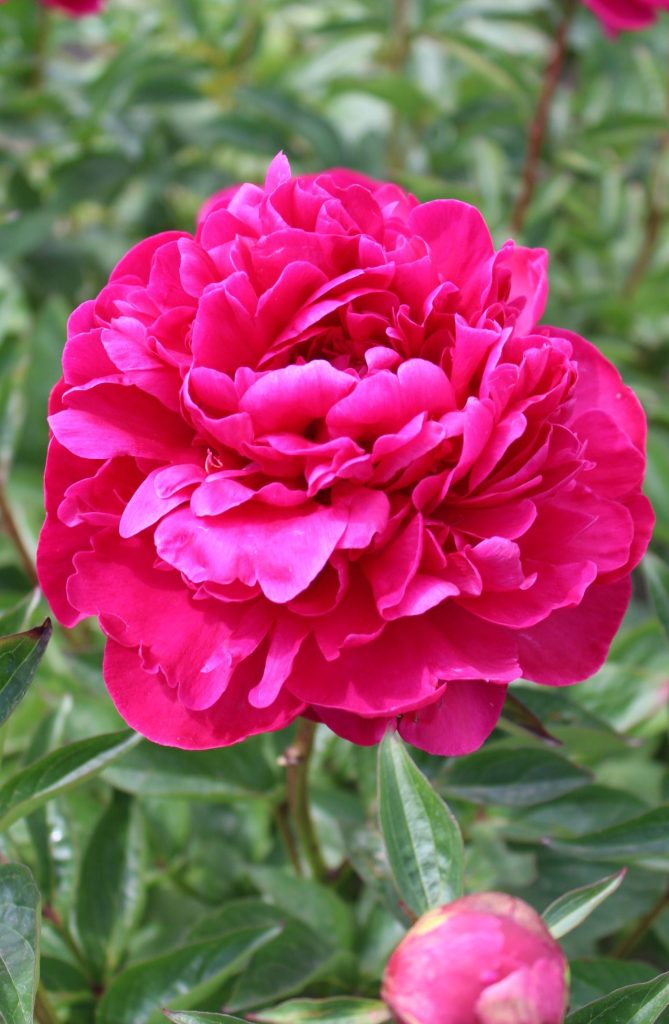
Music Man 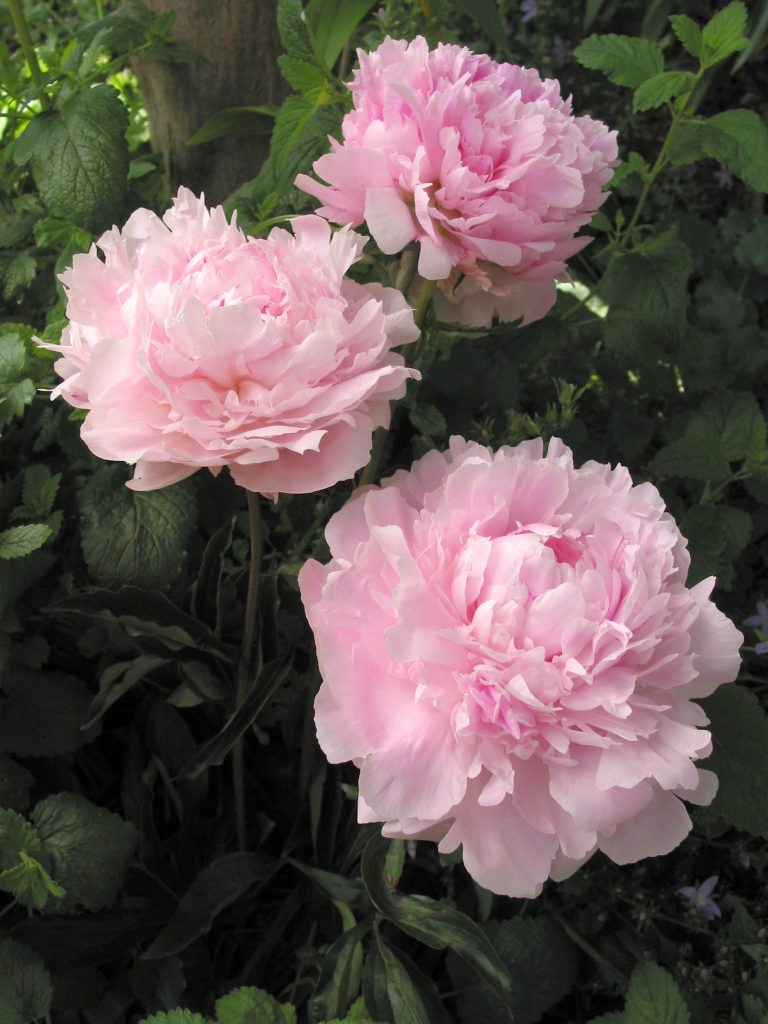
Sarah Bernhardt 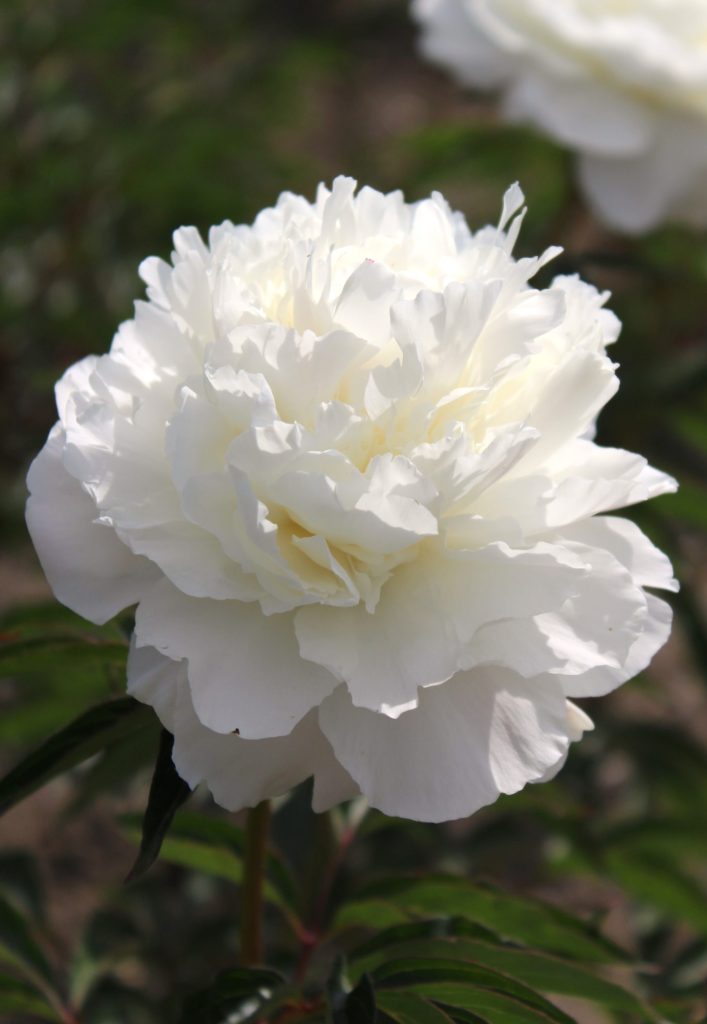
Shirley Temple 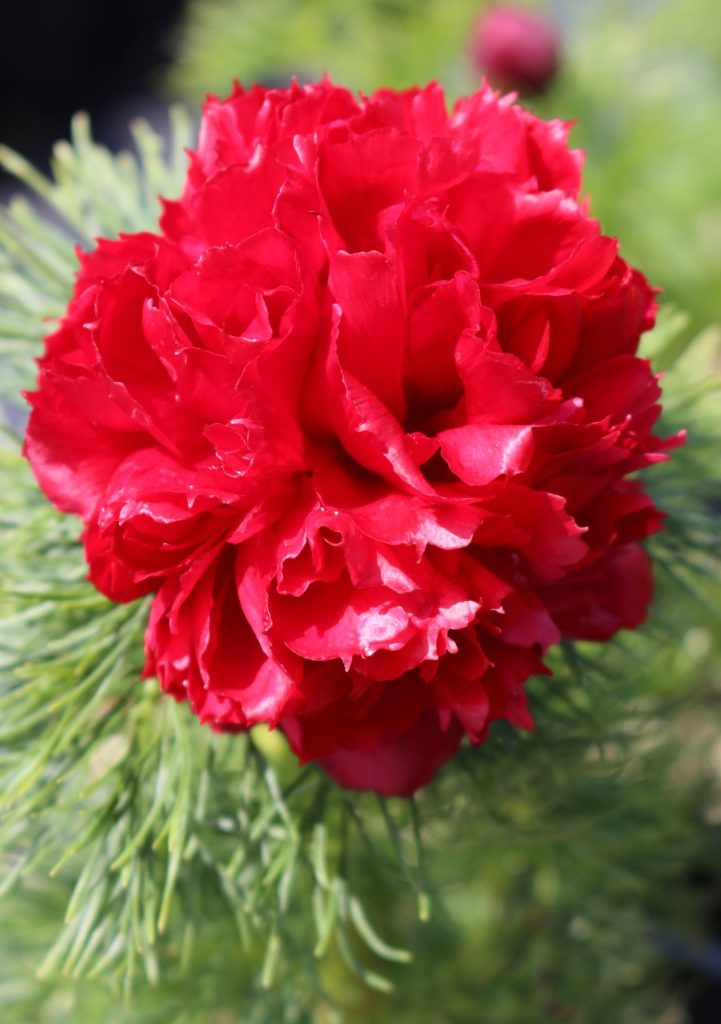
teunifolia Rubra Plena
Suffruticosa (Tree Peony)
Suffruticosa, also known as tree peonies, are a shrubby type of bush that has woody stems all year round. Tree peonies grow to approximately 150 cm (5’) tall and wide. Many tree peonies are grafted, a technique where the desired tree peony is fused to an understock of a different tree peony or hardy herbaceous peony rootstock. The grafted point should be planted 10-15 cm (4-6”) deep in the soil, where the new tree peony will develop roots and flourish. Be watchful of any suckers from below the grafting joint and prune them out below the soil level when you spot them. In the spring, suffruticosa peonies produce new leaves and huge blooms on their old wood stems. The wonderfully fragrant blooms are larger than garden peonies and available in shades of white, yellow, orange, pink, purple, red, and yellow and blends of these colours. In the spring, and once the blooms fade, remove the seed pods. Keep watering, as the leaves will continue to give wonderful colour all summer long. In the fall the leaves drop from the woody stems and the shrub will go dormant for the winter. Tree peonies are slow growing and generally hardy to zone 5.
Our Favourite Varieties of Suffruticosa – Tree Peonies
- High Noon
- Kao
- Kinkaku
- Renkaku
- Shimadaijin
- Shima-nishiki
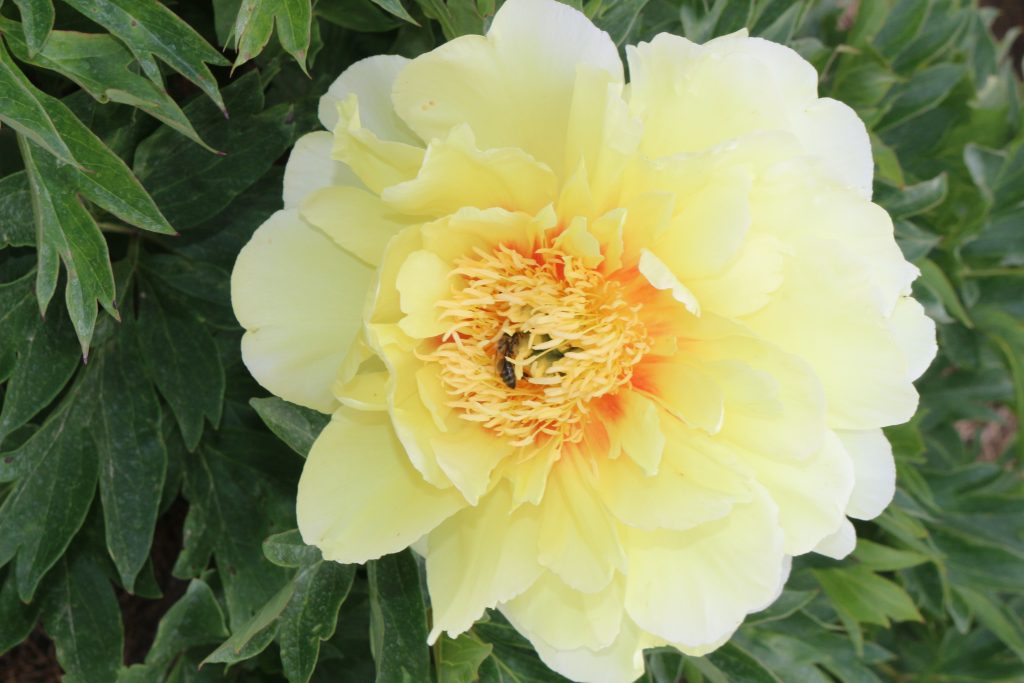
High Noon 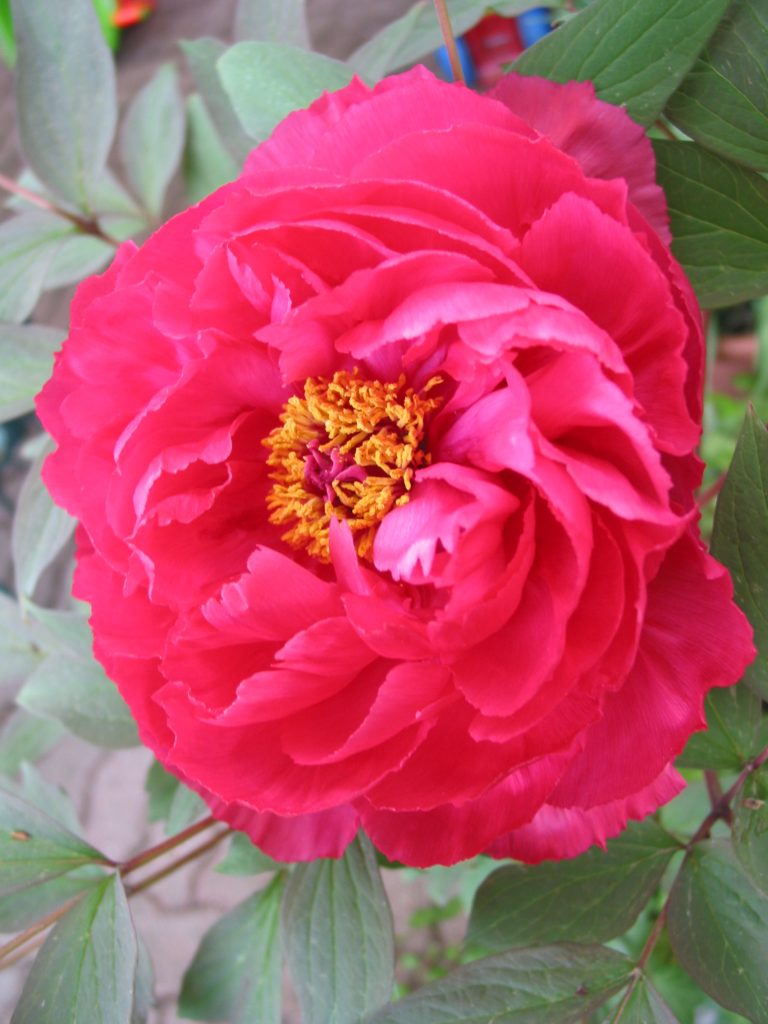
Kao 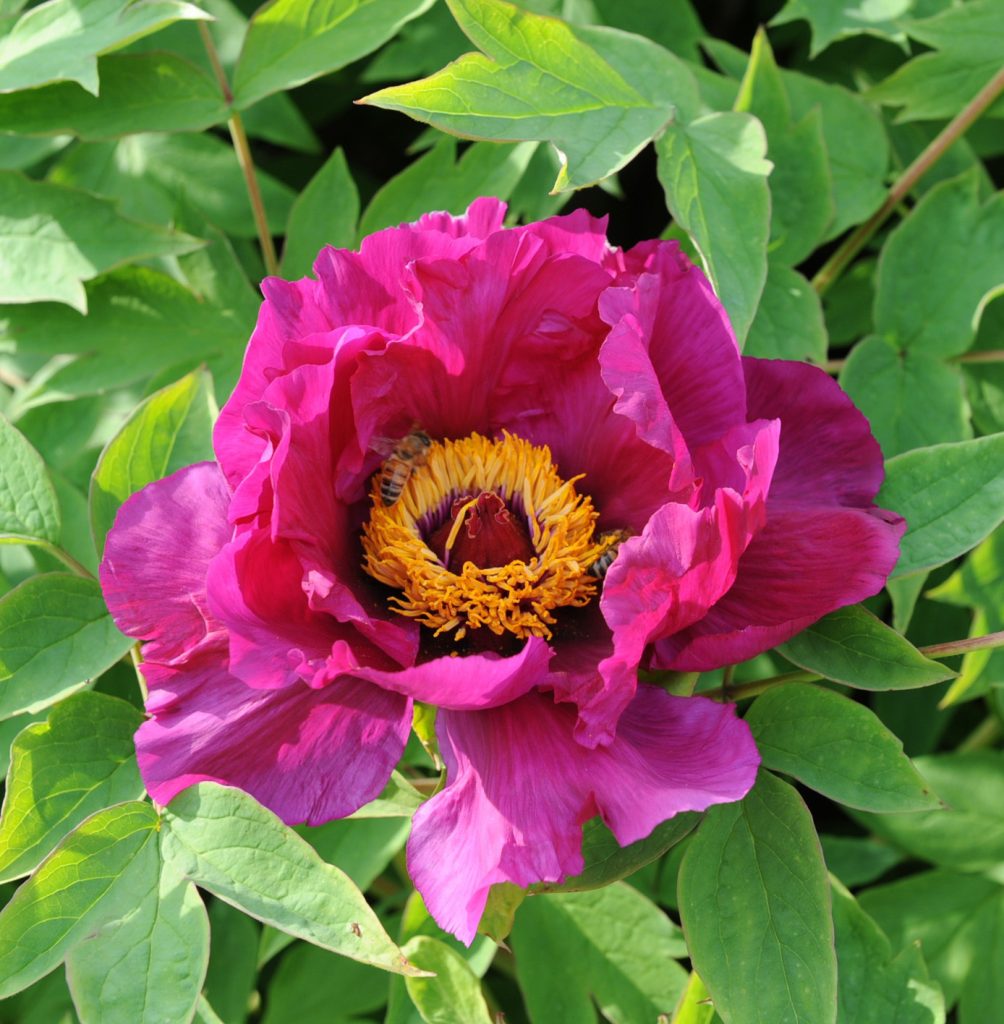
Shimadaijin 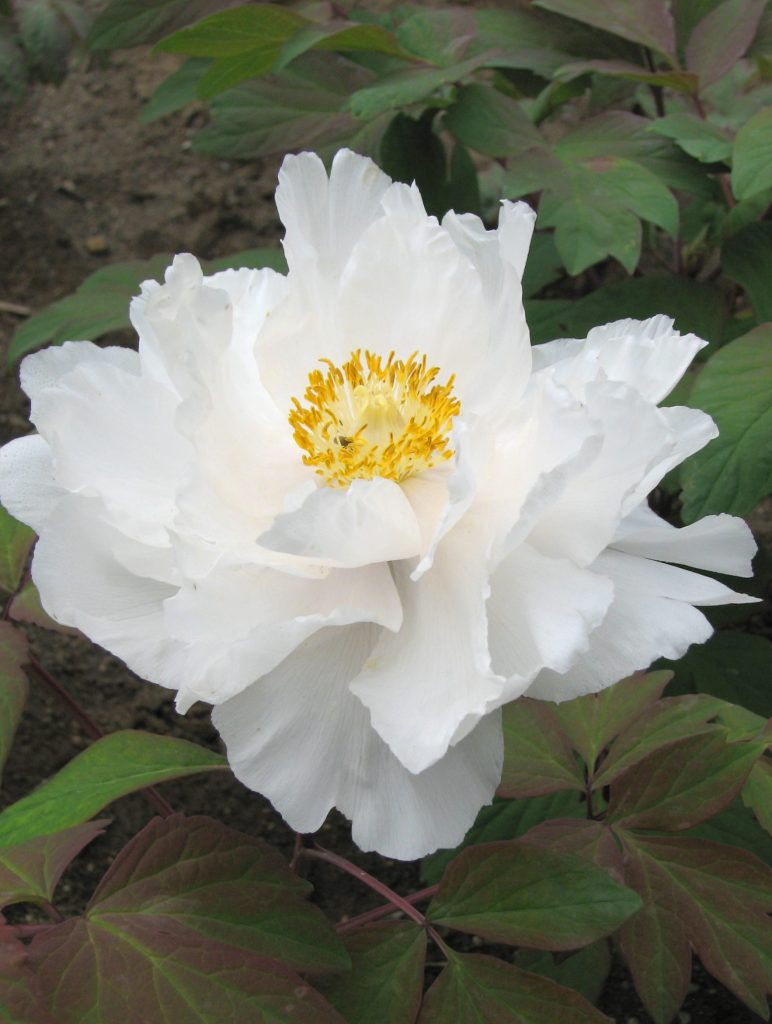
Renkaku 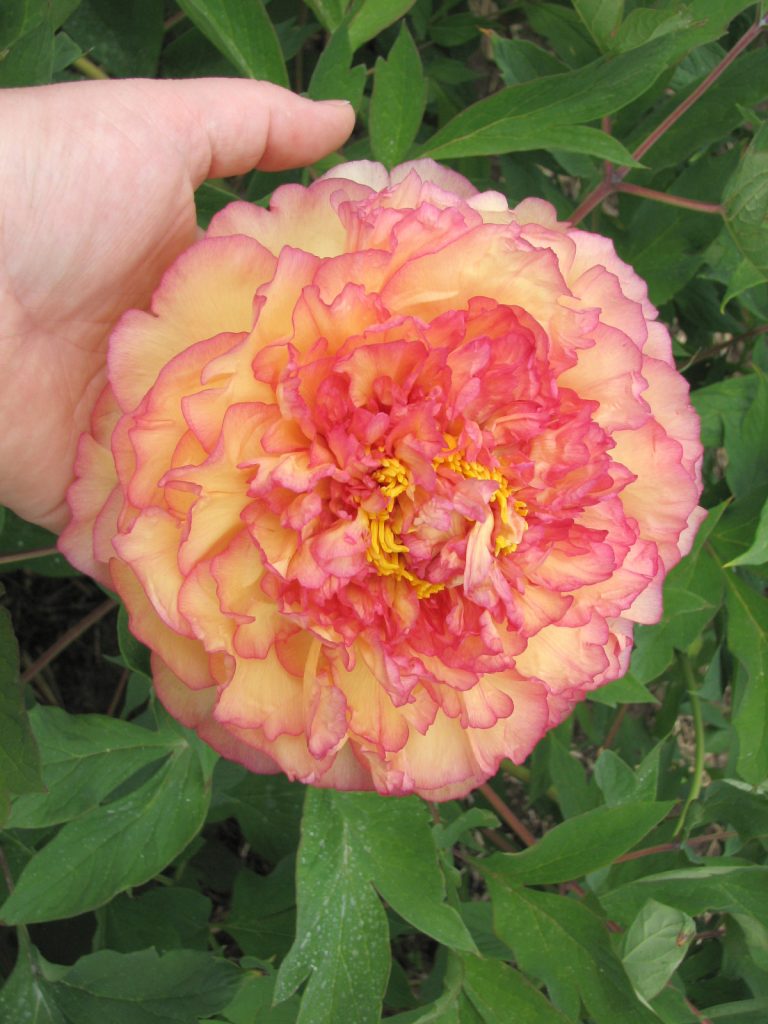
Kinkaku 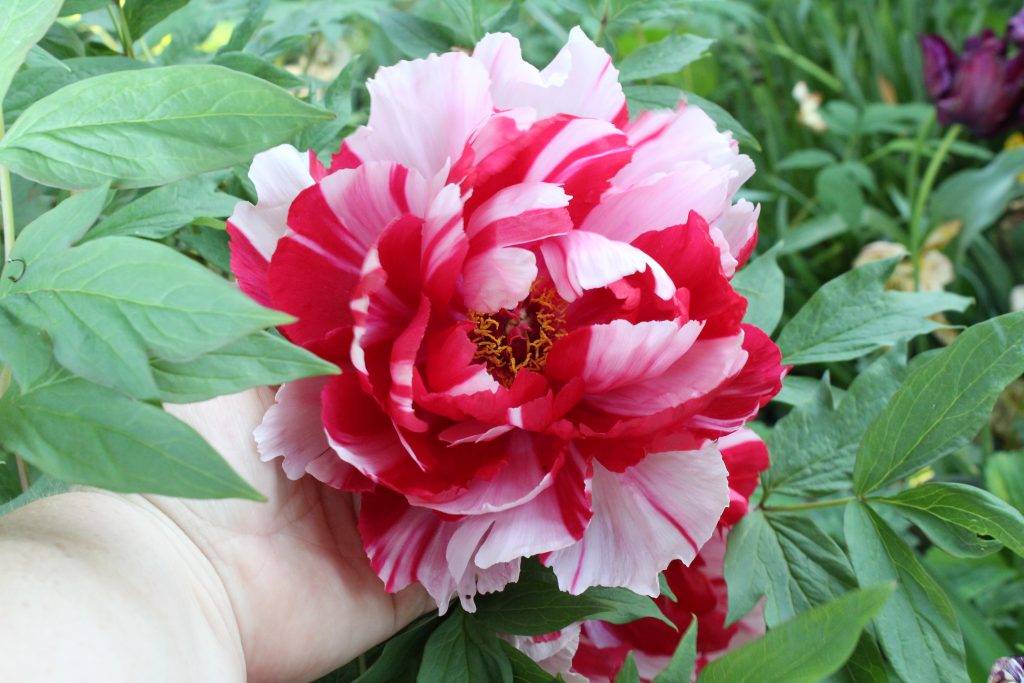
Shima-nishiki
Intersectional (Itoh peonies)
Intersectional, or Itoh peonies, are named after the original plant breeder Dr. Toichi Itoh, who made a cross that combines the best features of its parents. These hybrids have the fast growth of the herbaceous garden peony and from the suffruticosa tree peony, they have long-lasting, huge, lush blooms on sturdy stems that do not need staking. The sweet fragrance of the blooms adds extra wow to bouquets too! In the spring, fresh stems and leaves sprout up to and produce blooms in an amazing array of colour combinations. Once the blooms have finished, remove the seed pods and continue to water all summer long. In the fall once the foliage and stems have turned brown, trim them to soil level and you are ready for next spring. Intersectional peonies are hardy to zone 4.
Our Favourite Varieties of Intersectional – Itoh Peonies
- Bartzella
- Canary Brilliants
- Cora Louise
- First Arrival
- Julia Rose
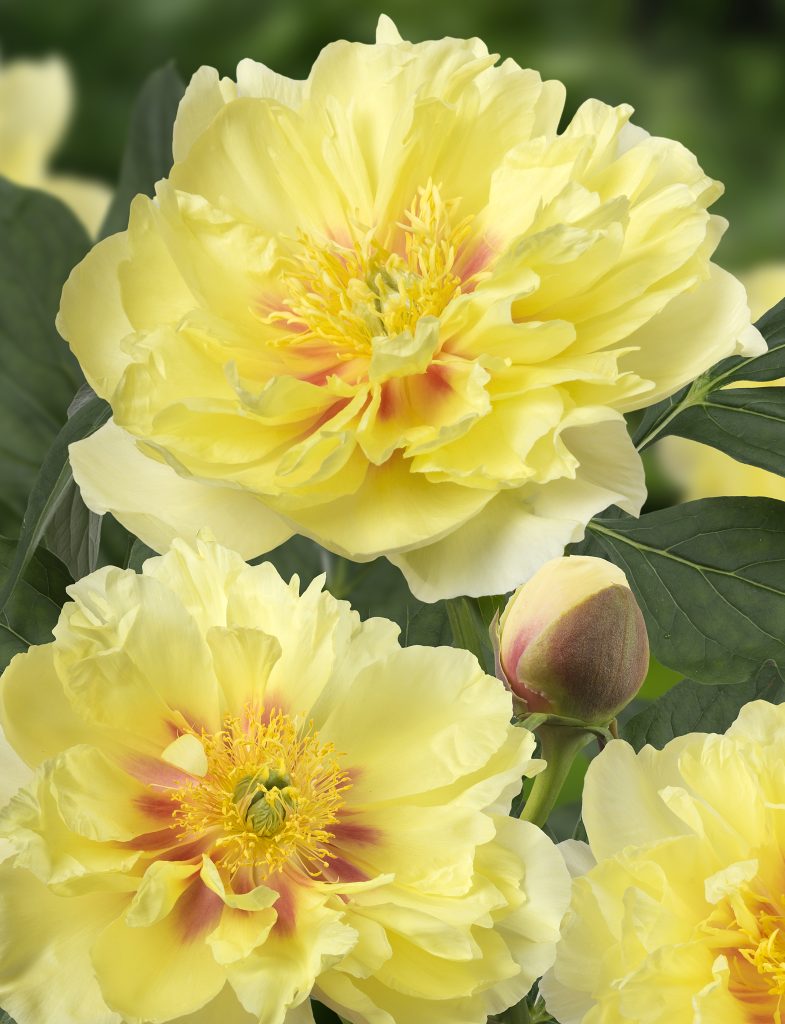
Bartzella 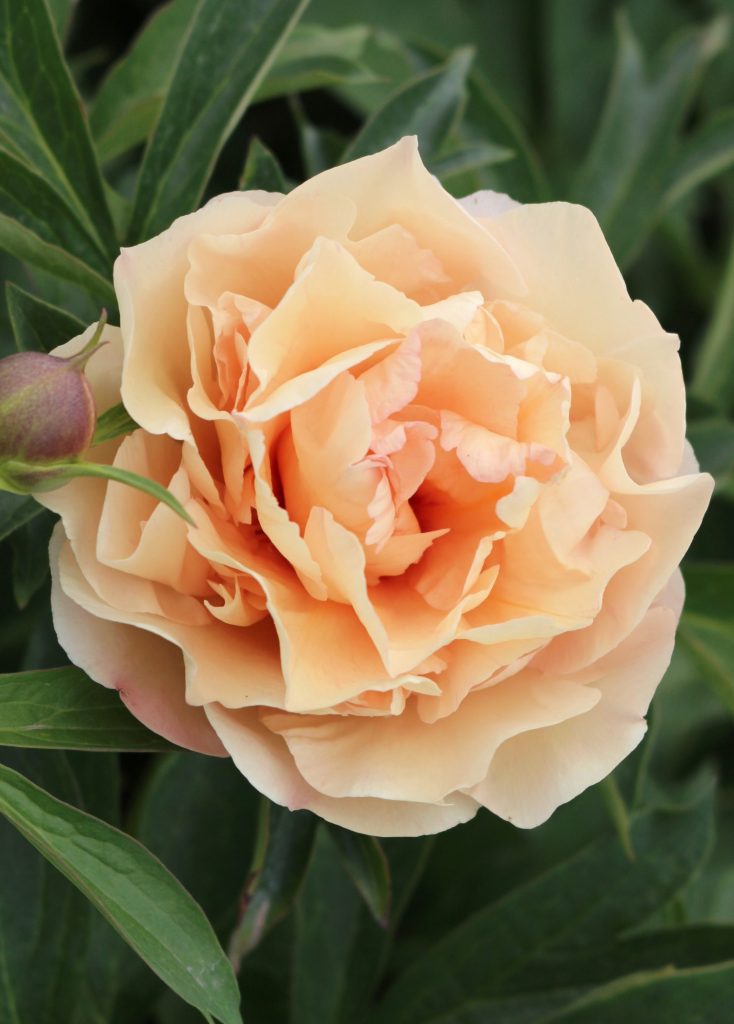
Canary Brilliants 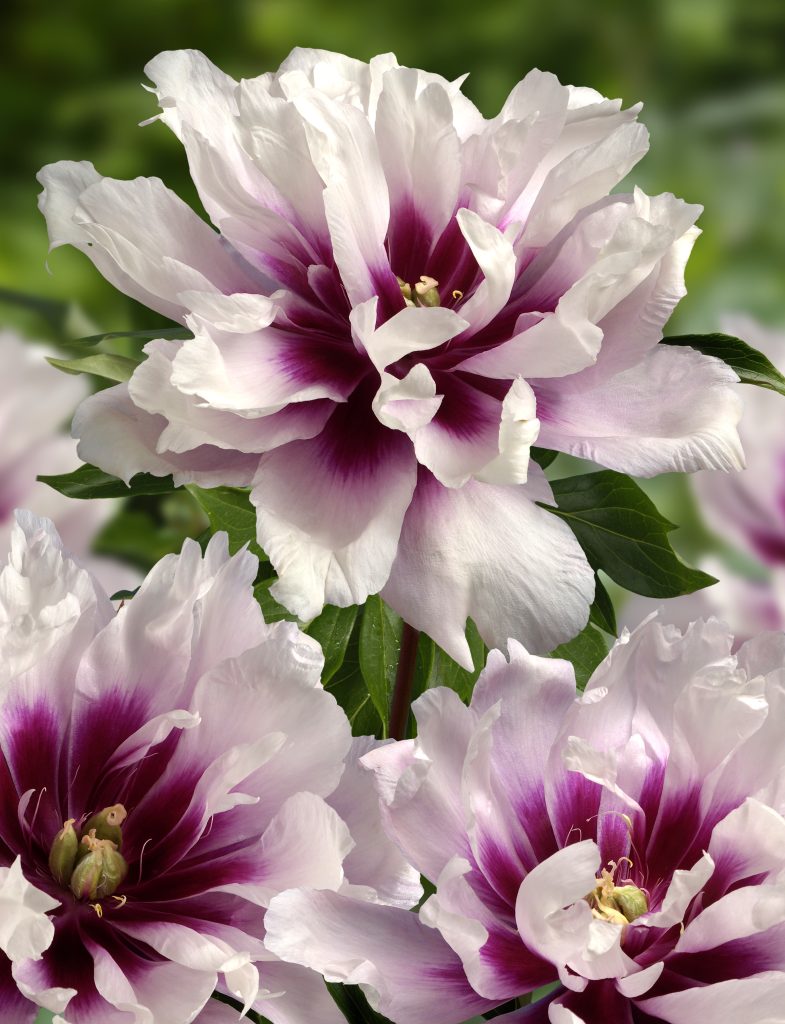
Cora Louise 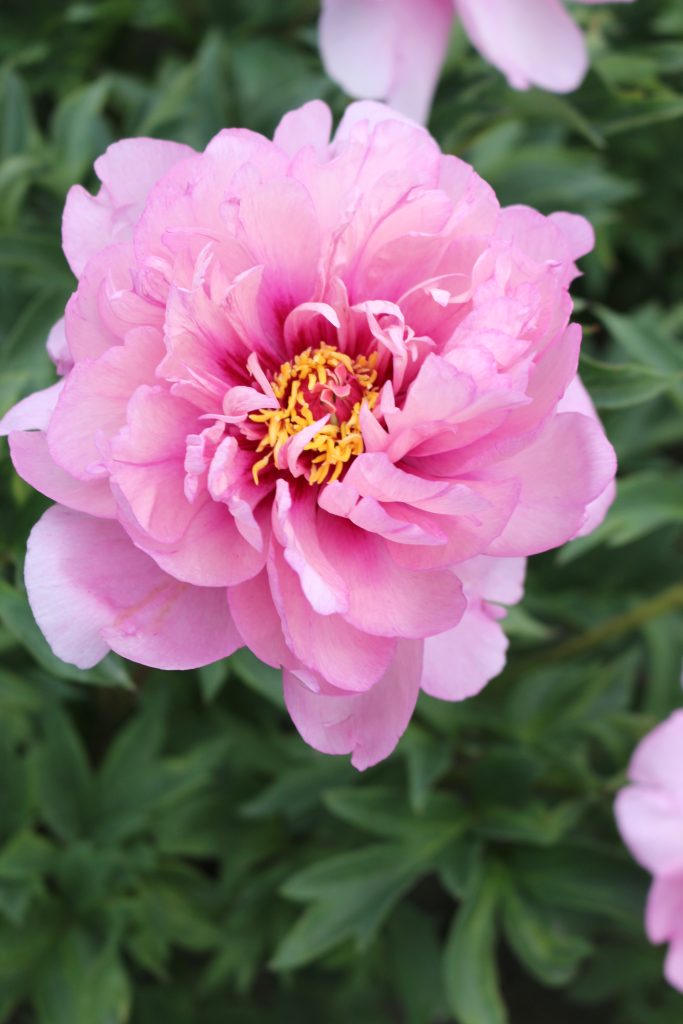
First Arrival 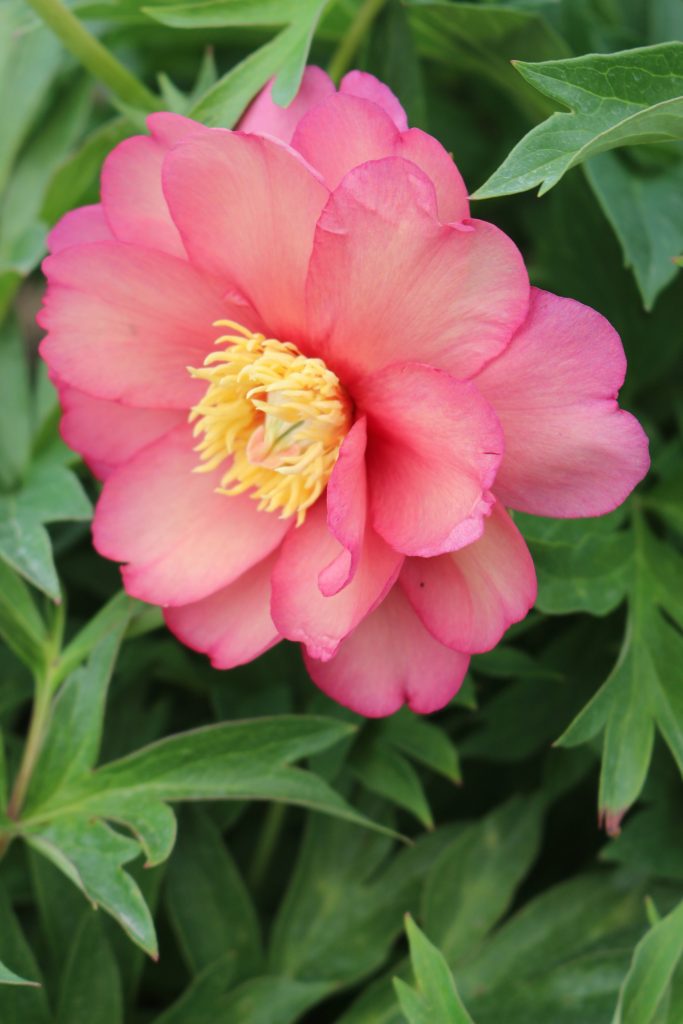
Julia Rose
Types of Peony Blooms
There are many bloom shapes or forms of peonies including singles, semi-double, full doubles, anemone, japanese and bomb types. The single and semi-double blooming types attract pollinators and become a great source of nectar and pollen. The anemone type has a set of large outer petals and a small pompom of petaloides in the center. Japanese peonies have a larger, more decorative stamen. The bomb type displays a large outer set of petals surrounding a large ball of petaloides. The double bomb, or what we refer to as triple-layer blooms, has an outer layer of guard petals, and a thick layer of large petaloides topped with large petals. The fully double varieties have blooms that are filled with lush large petals.
- Anemone: Bowl of Beauty, Primavere, White Cap
- Japanese: GF Hemrick, Sword Dance
- Bomb: Kirinmaru, Monsieur Jules Elie, Lilian Wild, Red Charm
- Double Bomb (Triple Layer): Pecher, Sorbet, Top Brass
- Single: Dancing Butterflies, Krinkled White, Scarlet Heaven
- Semi-Double: Cora Louise, First Arrival
- Double: Festiva Maxima, Shirley Temple, Scrumdidelyumptious, Yellow Crown
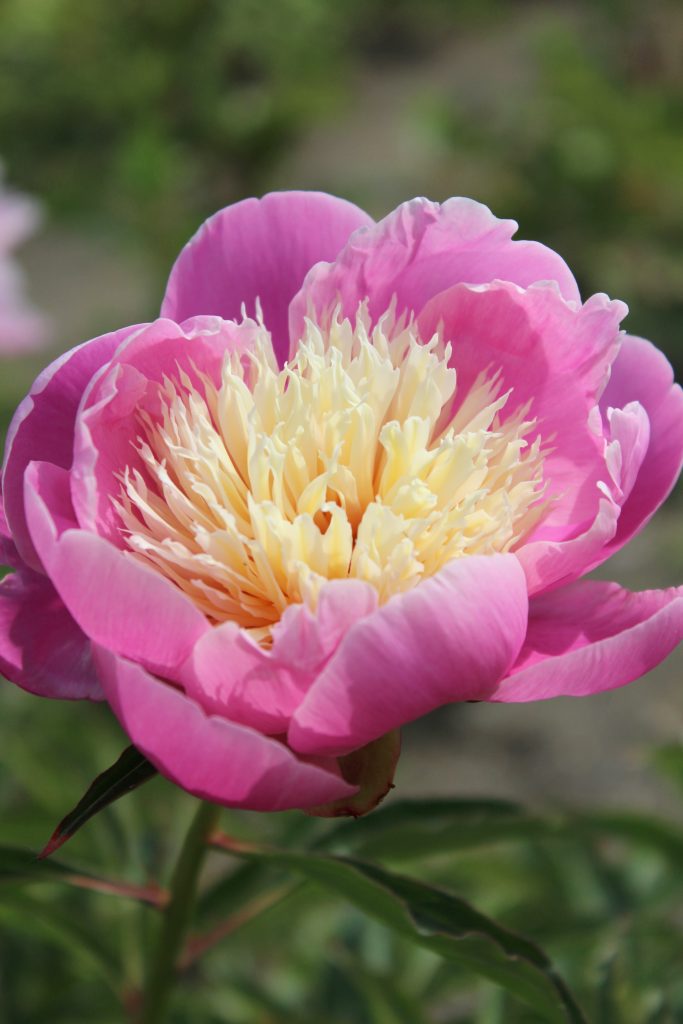
Anemone – Bowl of Beauty 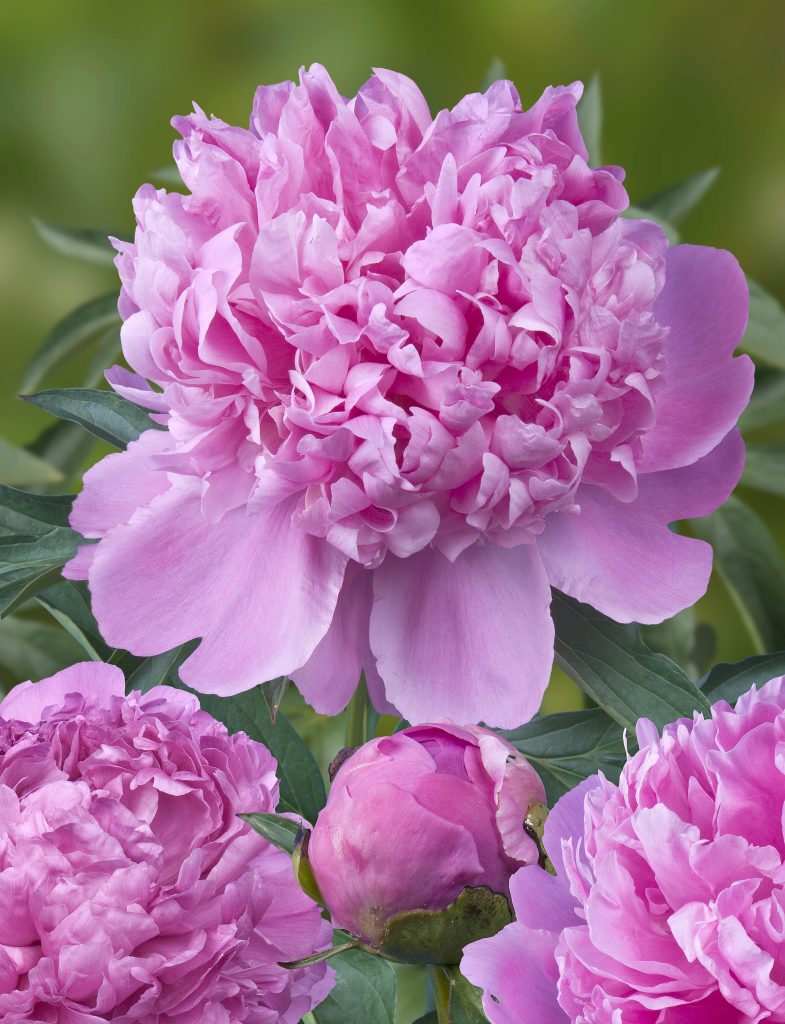
Bomb – Monsieur Jules Elie 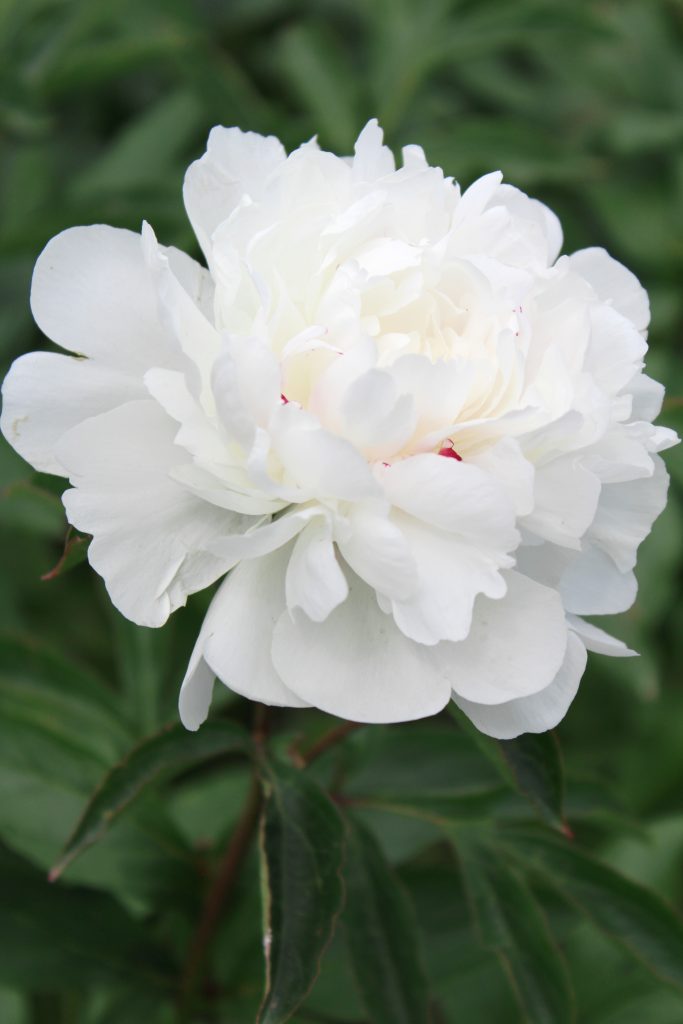
Double – Festiva Maxima 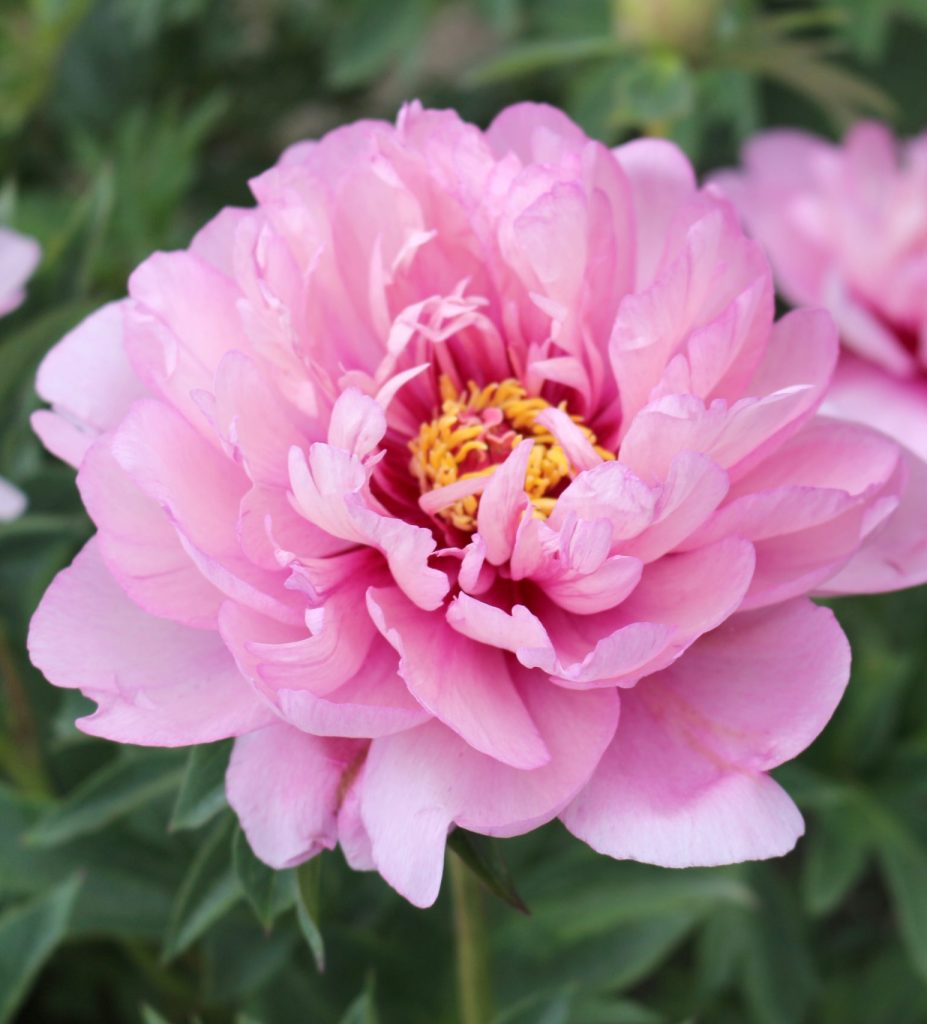
Semi-Double – First Arrival 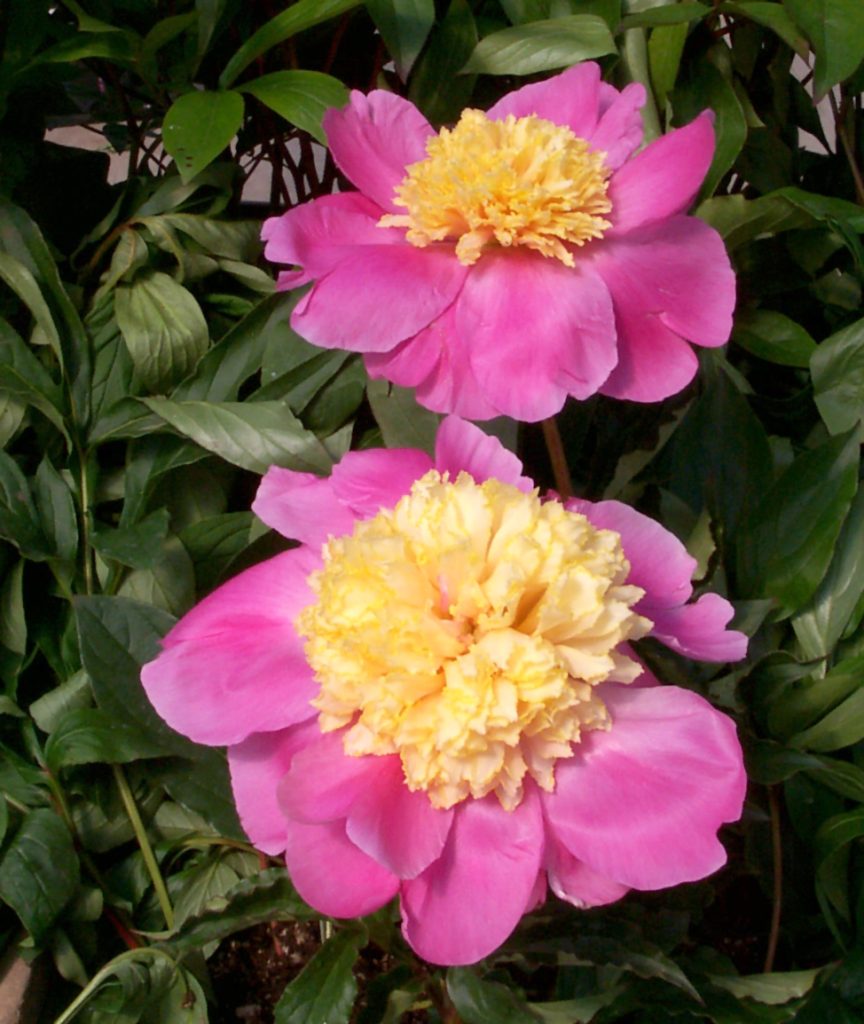
Japanese – GF Hemrick 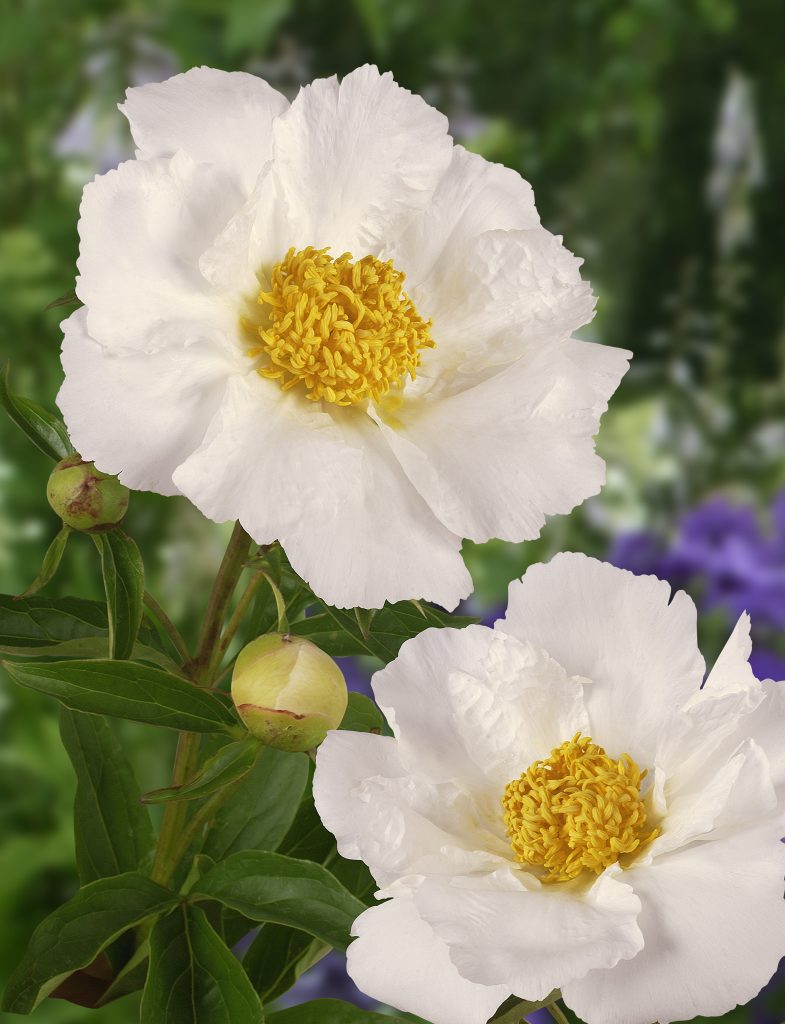
Single – Krinkled White 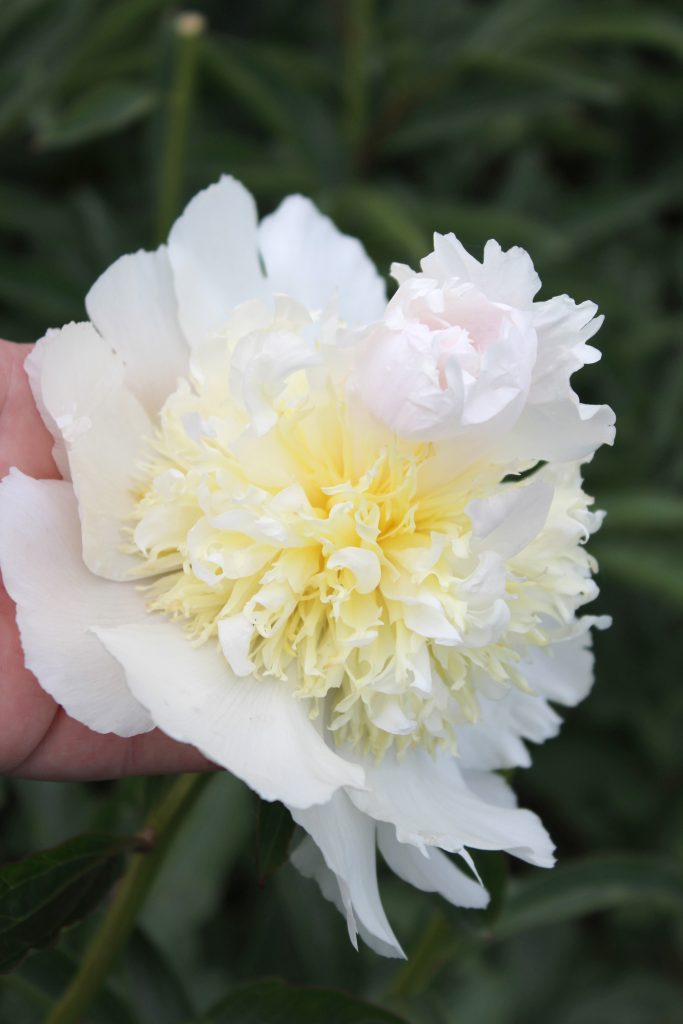
Double Bomb – Top Brass
Where to Plant Peonies
Peonies should be planted in a sunny location with well-draining rich soil. Peonies are long-lived, so loosen and amend the soil before planting. When planning a new planting of peonies, it is important to allow plenty of space between the plants, as they can grow up to 90 -120 cm (3-4 ft) wide. Peonies perform wonderfully with at least 5-6 hours of sun a day. Once established peonies are very low maintenance.
When to Plant Peonies
Peonies should be planted in early spring, once all danger of frost has passed and the soil has begun to warm up a bit. Or you can start them in containers indoors and transplant them outside from late spring through early summer.
How to Plant Peonies
It is important to get the root planted properly from the start. Peonies love well-draining soil, so loosen the soil to 20 cm (8”) and amend the soil with compost, well-rotted manure, and sand prior to planting. The planting depth of peony roots is the most important for success in flowering. The roots of herbaceous and intersectional peony types should be planted 5 cm (2”) below the surface of the soil. If the roots are too deep or too shallow, then the plants may not bloom to their potential. Keep in mind if you are adding mulch for extra winter protection that it is removed in spring so that it will not add to the soil depth.
When to Divide Peonies
Peonies do not enjoy being disturbed and divided, so with that in mind, try to not disturb your peony’s roots. If moving or dividing a peony is needed, autumn is the best time to do this, then ensure that the roots are immediately replanted. Dividing peonies in the spring should be avoided as you may forsake your blooms which happen from the end of May through July. Also note, that freshly planted peony roots can take up to 3 years before they are established and will start blooming.
How to Care for Peonies
Once established, peony bushes should be watered as needed to keep the soil moist during the blooming season. Remove faded blooms and allow the foliage to continue to grow. After blooming, water as often as needed to keep the foliage lush, so it may be once or twice a week or every other day in the heat of summer. In early spring, apply a slow-release fertilizer, and then again after blooming. It is also important to remove any weeds from around the base of peonies plants to avoid competition for nutrients and water.
Pests
Ants are common pests on peony bushes. This may occur as they are attracted to the sugar and nectar seeping out of the flower buds. However, ants are not harmful to peonies and can be controlled with bait traps.
Why are there Ants on My Peonies?
In most cases, ants on peony plants are attracted to the nectar of the flowers and are not harmful to the plants. However, if you notice an excessive number of ants on your peonies or if they appear to be causing damage to the plant, there are several methods that can be used to control ant infestations. These include setting out bait traps, spraying the stems and leaves with a vinegar solution, or applying horticultural oil to keep ants away.
Harvesting Peonies Cut Flowers
Peony season is typically late spring to early summer. The blooming period for most varieties lasts approximately 2-3 weeks. There are several different types of peonies, the most common being herbaceous peonies, Itoh peonies, and tree peonies. The first to bloom are suffruticosa tree peonies, the second is the herbaceous garden types and the last are the Itoh-intersectional varieties.
Peonies are best harvested when the buds are showing colour and feel squishy to touch (marshmallow stage). Once cut, immediately put in a vase of water out of direct sunshine and watch the blooms unfurl. Our cut flower growers will cut the stems and dry store them in a cooler for up to 10 days, then recut the stems at a 45-degree angle and enjoy 10 days on a vase life.
Peony flowers can also be harvested and dried for use in floral arrangements or to make potpourri. The best time to harvest peonies is just as they are beginning to open when the petals are still soft. To dry them, simply hang the bunches upside down in a dark, warm, dry place until the flowers are completely dry.
Whether you are planting peonies in your garden beds or borders or growing them in large containers on a patio, with the right care and maintenance, you can enjoy beautiful flowers all year long. So, if you’re ready to add some gorgeous blooms to your landscape, follow these tips for how to plant, grow and care for peonies.
For information on where to find Florissa products near you, please inquire on our Find a Retailer page.



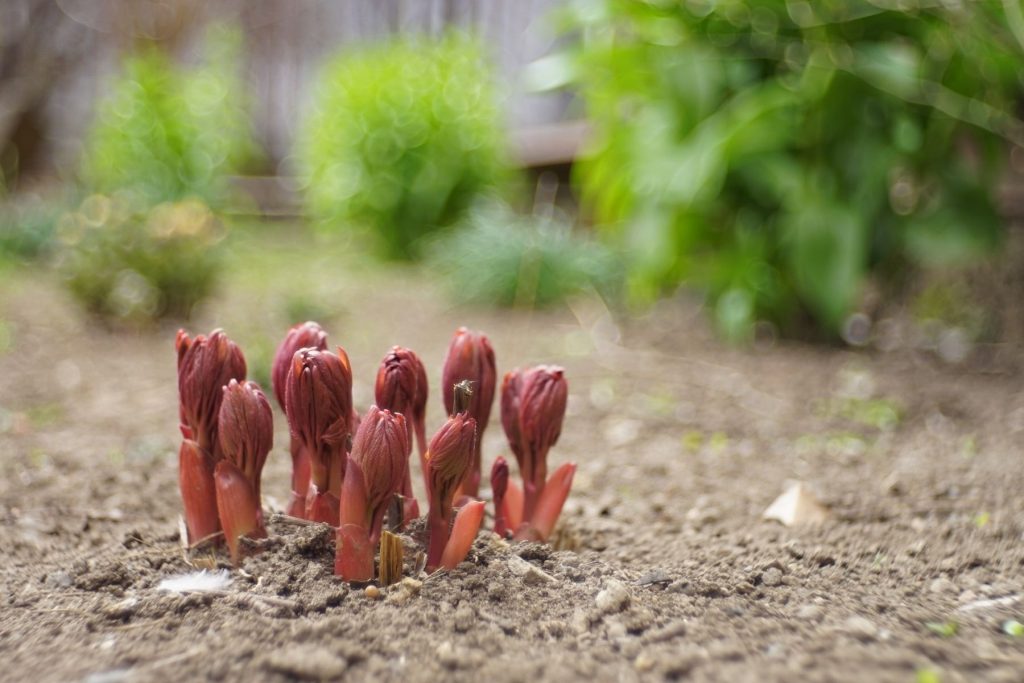
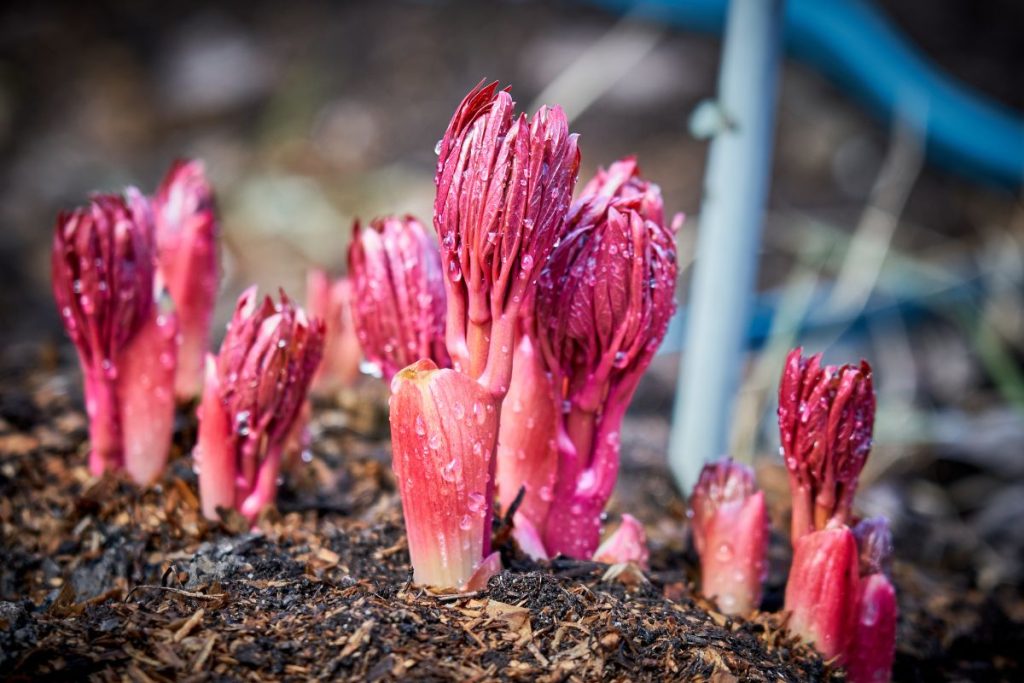
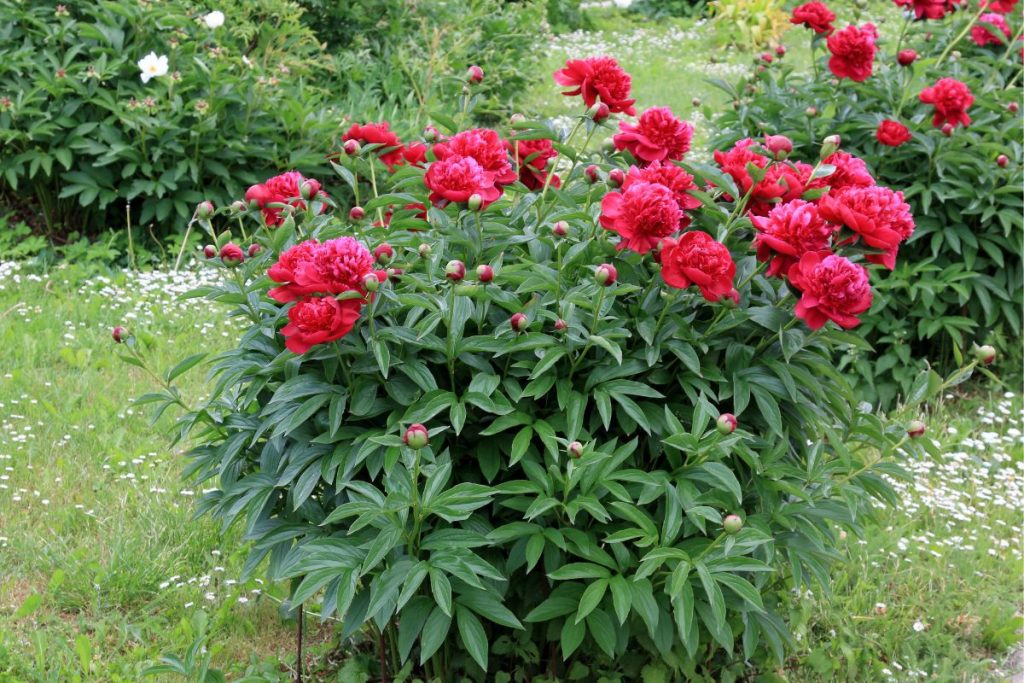
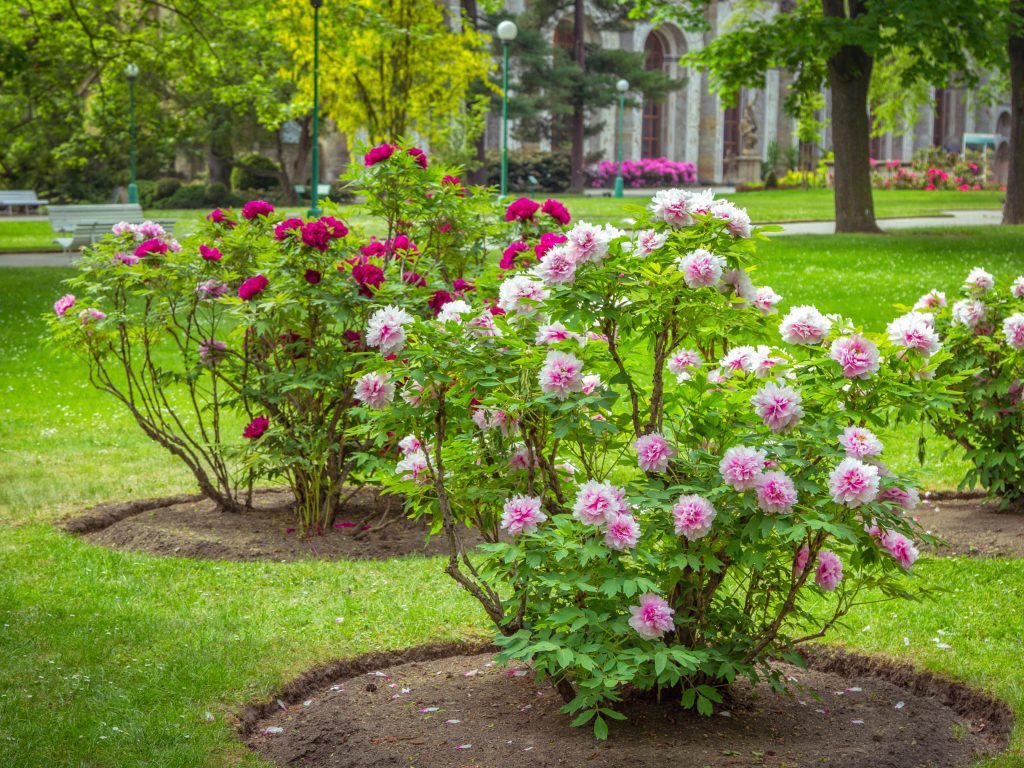
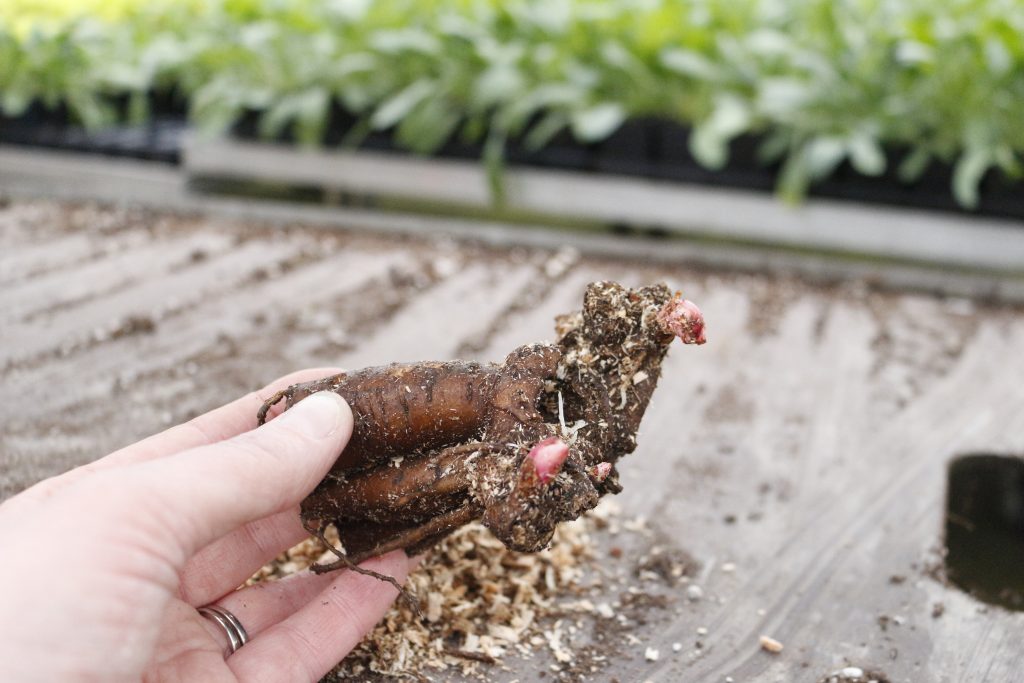
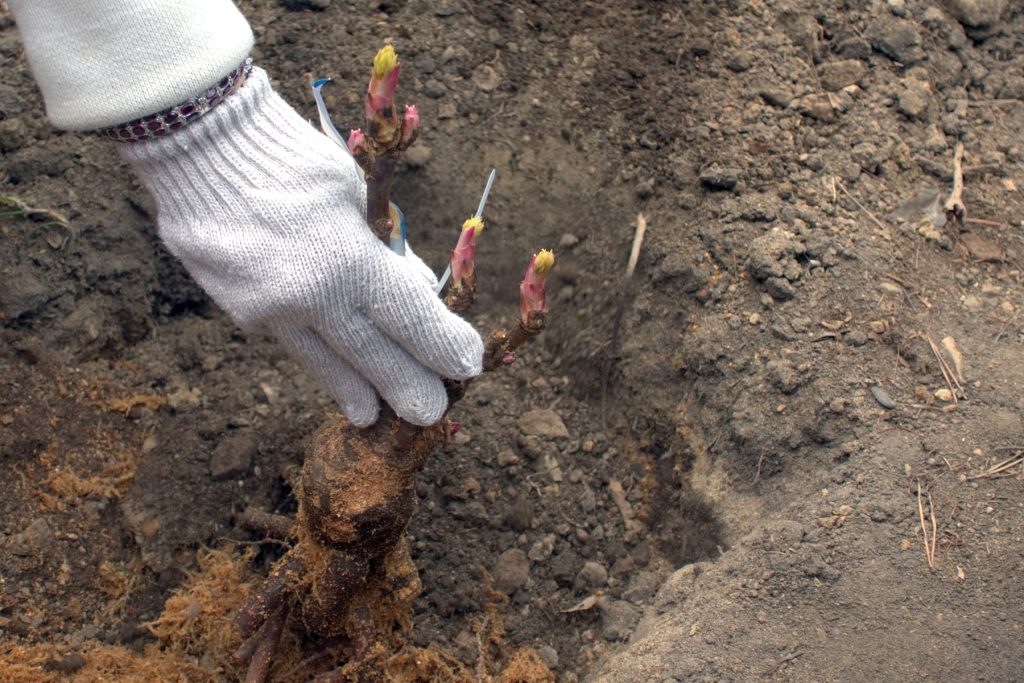
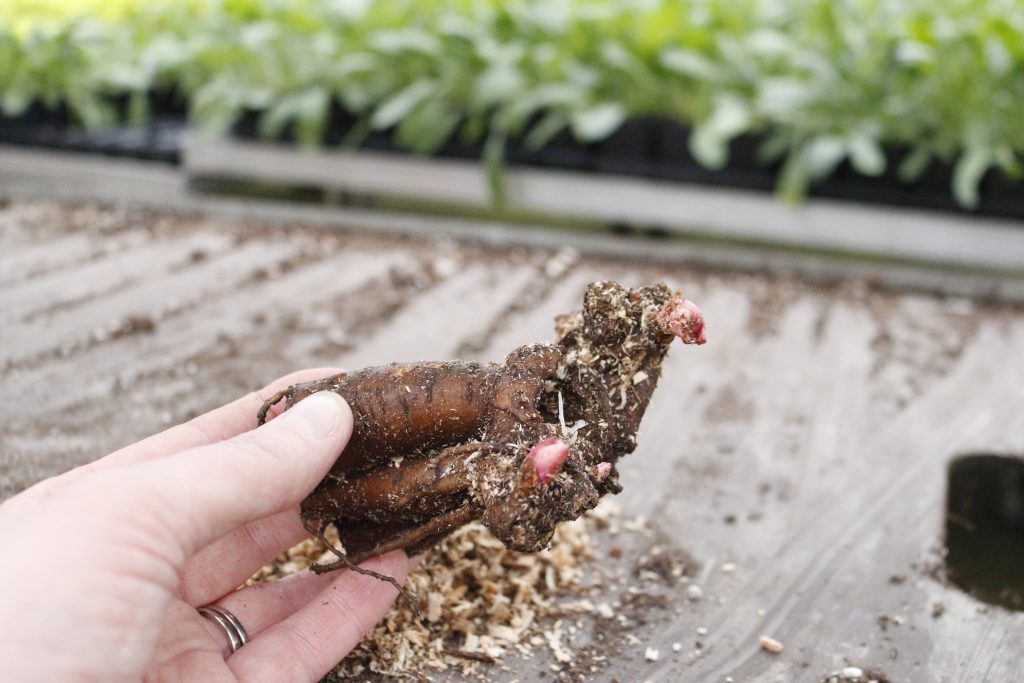
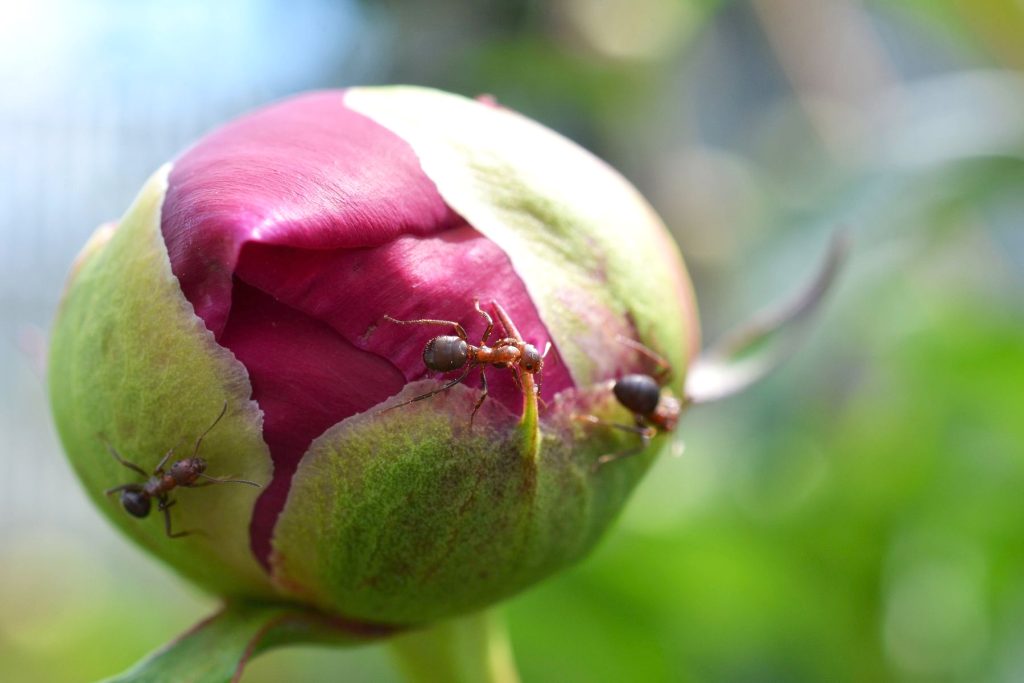
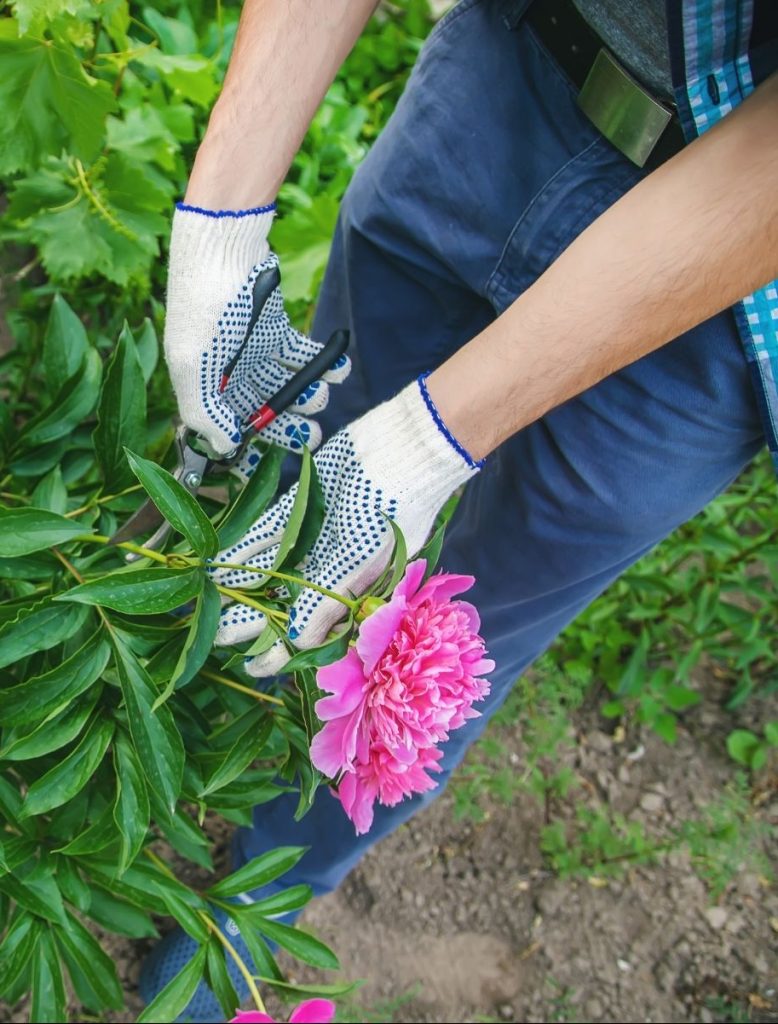

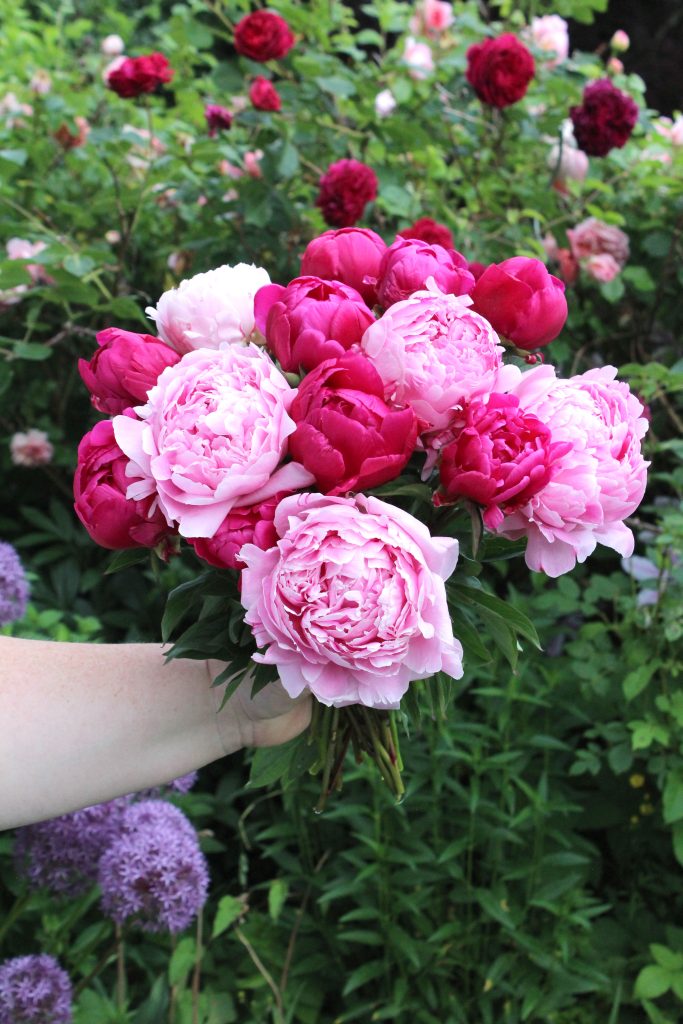
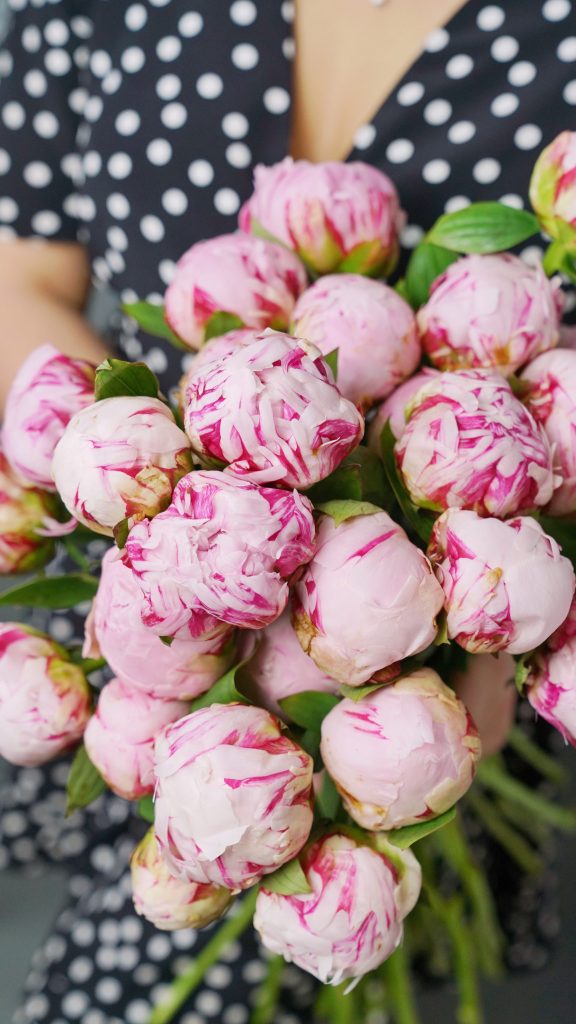
D.Brown
Thank you for all the info for the peonies.
Sean Patrick O'Brennan
Delightful ! Thank you for sharing all that knowledge and with vivid pictures too…
Esther
I just bought some scented Sarah Bernhardt peony roots and am excited about planting them. I live in Vancouver, BC. I’m glad you posted your website on the packaging. Right now, they sit in the cold room in my home, just waiting on the right time to plant. Thank you for all the information you provide on this website!